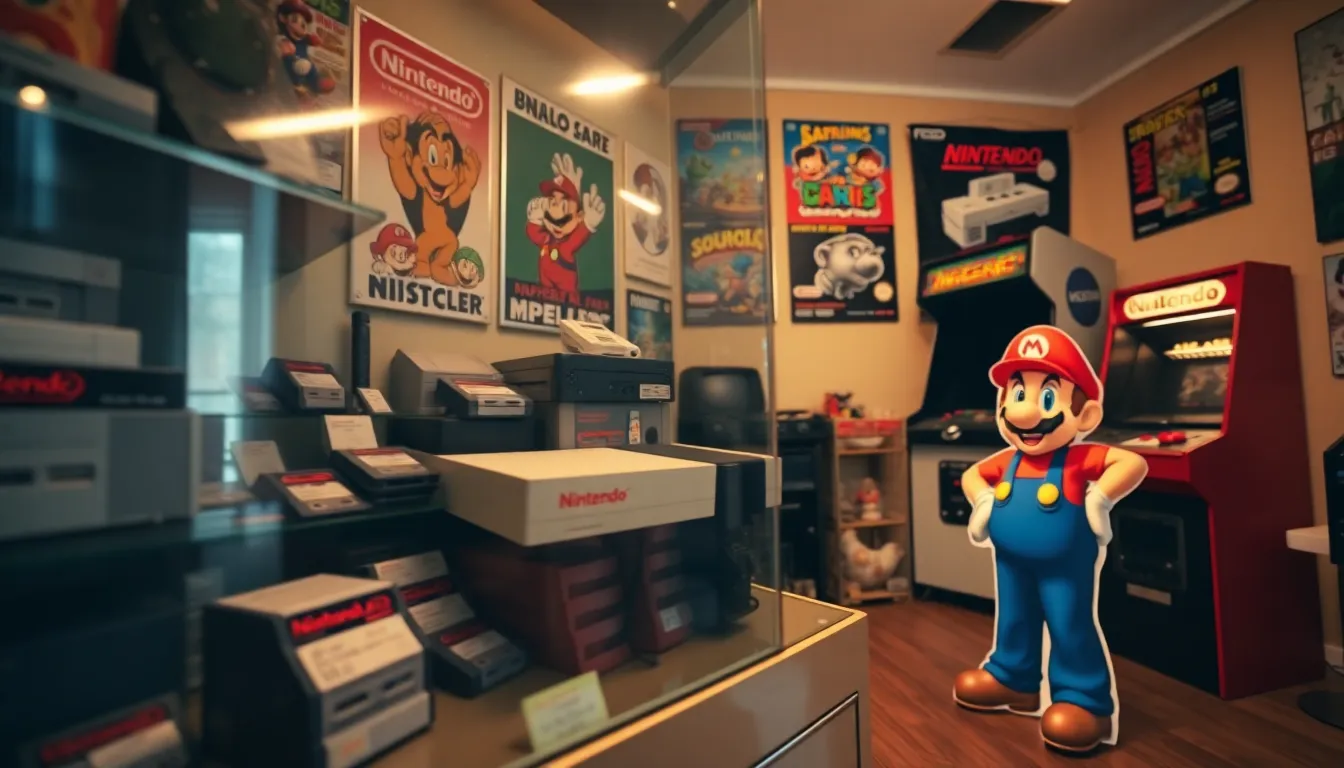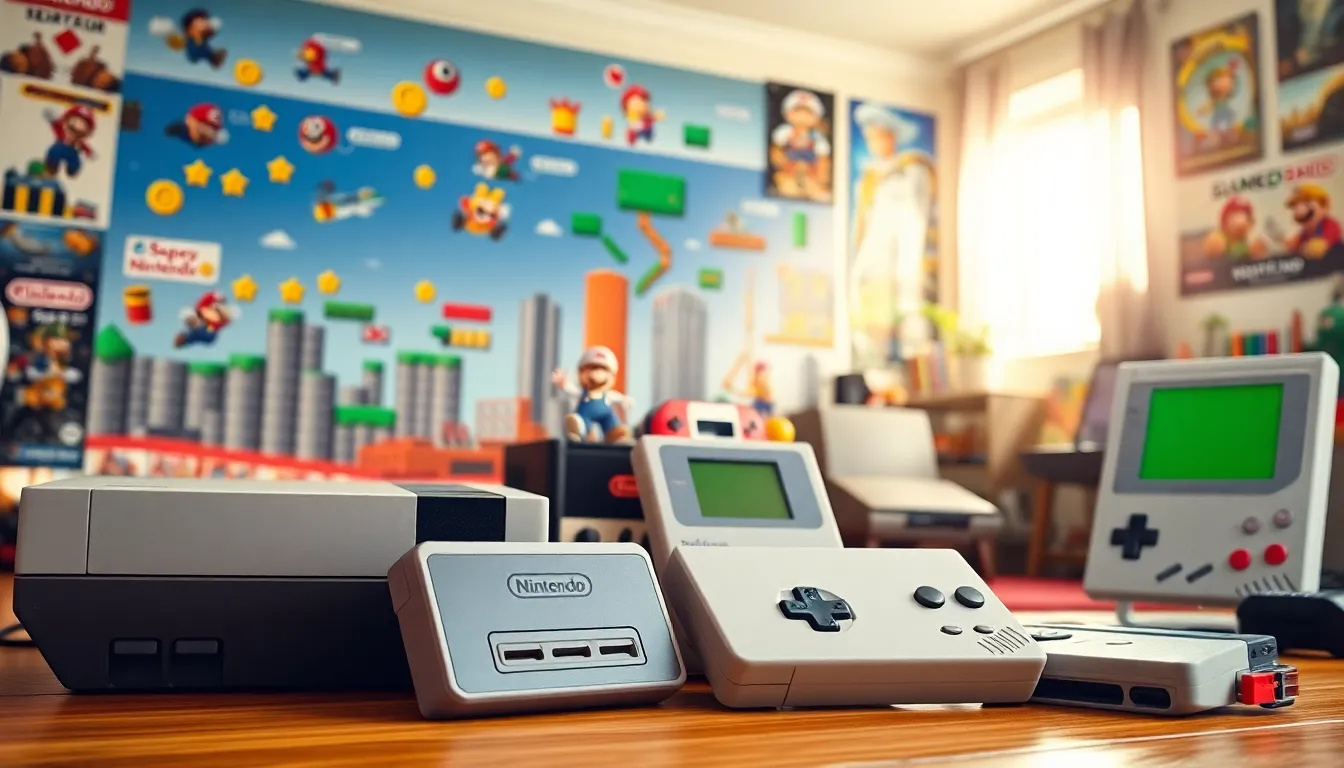Nintendo has long been a cornerstone of the gaming industry, shaping the way we play and enjoy interactive entertainment. Its rich history encompasses not just of gameplay but also a fascinating archive of stories, innovations, and dedicated fans. As gaming evolves, so does the need to preserve its history. This article delves into the significance of Nintendo’s archives, exploring their evolution, the role of communities in preservation, and what’s next for this beloved company’s legacy.
Table of Contents
ToggleThe Evolution of Nintendo’s Archives

A Brief History of Nintendo’s Legacy
Founded in 1889, Nintendo began as a playing card company that eventually transitioned to video games in the 1970s. From the release of the Nintendo Entertainment System (NES) to the Game Boy, the company has continually innovated, introducing timeless characters and engaging gameplay experiences. Each console launched not only provided new technology but also a new era for gaming, resulting in numerous classics that fans still cherish today.
Key Milestones in Gaming History
Some of the most significant milestones in Nintendo’s history include the introduction of the NES in 1983, which revitalized the gaming industry after the crash of 1983. Then came the Super Mario franchise, which redefined platform gaming, followed by the launch of the Nintendo Wii in 2006, which expanded reach by including casual gamers. Collectively, these milestones not only highlight Nintendo’s key contributions but form the backbone of its archives, which preserve this illustrious legacy.
Understanding the Significance of Game Preservation
The Role of Fans and Communities
Game preservation has become increasingly critical as technology evolves rapidly. Fans and online communities play pivotal roles in this, often taking the reins to document, curate, and share their beloved titles. Websites, forums, and social media platforms have given rise to extensive fan discussions, enhancing the accessibility of gaming history. They contribute to projects like the Game Preservation Society, showcasing the importance of community passion in archiving efforts.
Digital vs. Physical Preservation
Preserving games is a complex challenge, especially when comparing digital and physical formats. Physical games can deteriorate but often have tangible value, while digital formats can be more easily duplicated, yet may vanish with service shutdowns. As gaming transitions to cloud-based platforms, it’s imperative to carry out strategies ensuring that classic games remain accessible. Nintendo, acknowledging this nuance, has made strides in digital preservation, even re-releasing classic titles on modern platforms.
Highlights from Nintendo’s Archive Initiatives
Iconic Game Releases and Their Impact
Among Nintendo’s vast archive, certain titles like “The Legend of Zelda” and “Super Mario Bros.” stand out not only for their entertainment value but also for their cultural significance. These iconic games have influenced not just gamers but also developers worldwide, establishing trends that resonate even today. Their preservation ensures that future generations can experience the very essence of gaming history.
Spotlight on Rare and Forgotten Titles
Plus to blockbusters, Nintendo’s archives also spotlight lesser-known, rare treasures. Games like “EarthBound” or “Panel de Pon” hold a special place in the hearts of dedicated fans, even though their limited commercial success. Preserving these forgotten titles is vital in understanding the breadth of Nintendo’s history and the diverse experiences it has offered.
Future Directions for Nintendo Archives
Innovations in Digital Archiving
As technology advances, so does the potential for innovative archiving solutions. Nintendo could benefit from enhanced digital archiving practices, utilizing cloud storage and blockchain technology to secure its intellectual property and ensure availability for nostalgic players and newcomers alike. Initiatives that leverage virtual reality to create immersive experiences of history invite exciting possibilities.
Engaging the New Generation of Gamers
To maintain relevance, engaging newer generations is crucial. Nintendo’s approach should not solely focus on preserving legacy titles: it should also include educational initiatives that inform young audiences about the history of gaming. Collaborations with educational institutions or digital platforms can provide interactive experiences, ensuring the next generation appreciates and acknowledges the significance of their gaming heritage.
Conclusion
Nintendo’s archives represent a valuable resource, illustrating a legacy that has shaped the gaming landscape. From its evolution in the industry to the passionate efforts of fans in preserving this history, the journey is far from over. Innovations in digital archiving and strategies to engage new gamers ensure that the vast story of Nintendo will continue to inspire future generations.





